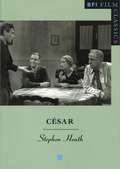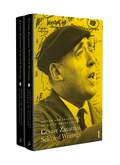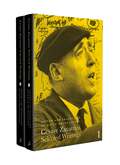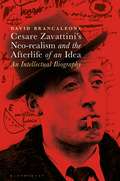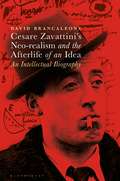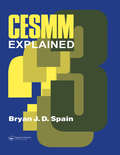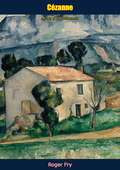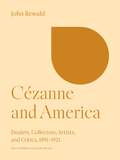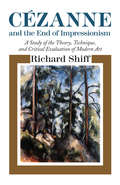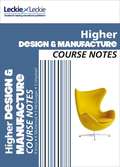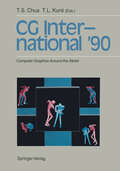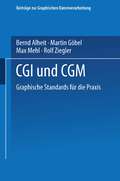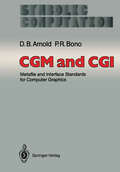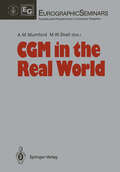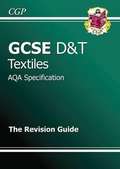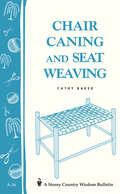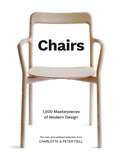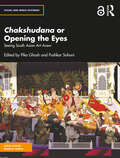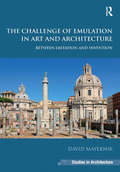- Table View
- List View
César (BFI Film Classics)
by Stephen HeathBringing to a close his 'Marseille' trilogy, César (1936) was one of Marcel Pagnol's most significant projects. This text reviews the questions that Pagnol posed in the film, looking at how he reflected the contemporary and artistic culture of the city, around which the trilogy was based. Above all, Stephen Heath looks at César's relation to the contemporary artistic and cultural-historical reality of Marseille, the defining locality of the trilogy and in many ways its main character.
César (BFI Film Classics)
by Stephen HeathBringing to a close his 'Marseille' trilogy, César (1936) was one of Marcel Pagnol's most significant projects. This text reviews the questions that Pagnol posed in the film, looking at how he reflected the contemporary and artistic culture of the city, around which the trilogy was based. Above all, Stephen Heath looks at César's relation to the contemporary artistic and cultural-historical reality of Marseille, the defining locality of the trilogy and in many ways its main character.
Cesare Zavattini: Selected Writings
by David BrancaleoneCesare Zavattini: Selected Writings offers, for the first time in English, a substantive selection of the Italian screenwriter's writings across two volumes. Through translation and detailed cultural and contextual commentary, translator and editor David Brancaleone traces not only Zavattini's theory of the screen, but also his experimentation in new film practices, including the flash-film (film lampo), the inquiry film (film inchiesta), cinema as encounter (cinema d'incontro), the diary film (film diario), the confessional film (film-confessione), and the grass-roots community film (cinema insieme or cinema di tanti per tanti).
Cesare Zavattini: Selected Writings
Cesare Zavattini: Selected Writings offers, for the first time in English, a substantive selection of the Italian screenwriter's writings across two volumes. Through translation and detailed cultural and contextual commentary, translator and editor David Brancaleone traces not only Zavattini's theory of the screen, but also his experimentation in new film practices, including the flash-film (film lampo), the inquiry film (film inchiesta), cinema as encounter (cinema d'incontro), the diary film (film diario), the confessional film (film-confessione), and the grass-roots community film (cinema insieme or cinema di tanti per tanti).
Cesare Zavattini’s Neo-realism and the Afterlife of an Idea: An Intellectual Biography
by David BrancaleoneHow many Zavattinis are there? During a life spanning most of the twentieth century, the screenwriter who wrote Sciuscià, Bicycle Thieves, Miracle in Milan, and Umberto D. was also a pioneering magazine publisher in 1930s Milan, a public intellectual, a theorist, a tireless campaigner for change within the film industry, a man of letters, a painter and a poet. This intellectual biography is built on the premise that in order to understand Zavattini's idea of cinema and his legacy of ethical and political cinema (including guerrilla cinema), we must also tease out the multi-faceted strands of his interventions and their interplay over time. The book is for general readers, students and film historians, and anyone with an interest in cinema and its fate.
Cesare Zavattini’s Neo-realism and the Afterlife of an Idea: An Intellectual Biography
by David BrancaleoneHow many Zavattinis are there? During a life spanning most of the twentieth century, the screenwriter who wrote Sciuscià, Bicycle Thieves, Miracle in Milan, and Umberto D. was also a pioneering magazine publisher in 1930s Milan, a public intellectual, a theorist, a tireless campaigner for change within the film industry, a man of letters, a painter and a poet. This intellectual biography is built on the premise that in order to understand Zavattini's idea of cinema and his legacy of ethical and political cinema (including guerrilla cinema), we must also tease out the multi-faceted strands of his interventions and their interplay over time. The book is for general readers, students and film historians, and anyone with an interest in cinema and its fate.
CESMM 3 Explained
by Bryan SpainCESSM 3 Explained provides a detailed and highly illustrated guide to the use of the new civil engineering standard methods of measurements.
Cézanne: A Study of His Development
by Roger FryThe late Roger Fry was an art critic of unequalled perception and influence. One of his missions was to work for a better understanding of the Impressionist school and, above all, to claim for Cézanne (1839-1906) the great place that was rightfully his. In CÉZANNE Fry wrote a critical analysis which in many aspects has never been surpassed. He achieved with conspicuous success a two-fold aim: to show the essential development of the painter’s genius and to approach his work as it really is; as Fry himself words it, to detect the profound difference between Cézanne’s message and what we have made of it.”The result is a book, couched in Fry’s most lucid, penetrating manner, which is of great technical value to the painter and student, and which offers to the layman an illuminating demonstration of the essential nature of Cézanne’s art.
Cézanne and America: Dealers, Collectors, Artists, and Critics, 1891-1921 (The A. W. Mellon Lectures in the Fine Arts #28)
by John RewaldThe classic work by internationally acclaimed Cézanne scholar John RewaldIn Cézanne and America, John Rewald presents a full account of how Paul Cézanne’s reputation and influence became established in America between 1891 and 1921, and of how some of the world’s largest collections of his works were formed in the United States. This is the fascinating story of enthusiastic young American artists who took up Cézanne’s cause after they discovered him in Paris. It is also the story of the discerning early American collectors of his work—Leo and Gertrude Stein, the Havemeyers, and John Quinn, among others—many of whom made their first purchases from Cézanne’s wily dealer Ambroise Vollard in Paris, or from the dealer Alfred Stieglitz in New York, and of the beginning of the famous collection of Dr. Albert C. Barnes. Each chapter is illustrated not only with Cézanne’s works but also with portraits of collectors and critics and with previously unpublished pages from diaries, dealers’ ledgers, and Cézanne’s own correspondence.
Cezanne and the End of Impressionism: A Study of the Theory, Technique, and Critical Evaluation of Modern Art
by Richard ShiffDrawing on a broad foundation in the history of nineteenth-century French art, Richard Shiff offers an innovative interpretation of Cézanne's painting. He shows how Cézanne's style met the emerging criteria of a "technique of originality" and how it satisfied critics sympathetic to symbolism as well as to impressionism. Expanding his study of the interaction of Cézanne and his critics, Shiff considers the problem of modern art in general. He locates the core of modernism in a dialectic of making (technique) and finding (originality). Ultimately, Shiff provides not only clarifying accounts of impressionism and symbolism but of a modern classicism as well.
Cezanne and the End of Impressionism: A Study of the Theory, Technique, and Critical Evaluation of Modern Art
by Richard ShiffDrawing on a broad foundation in the history of nineteenth-century French art, Richard Shiff offers an innovative interpretation of Cézanne's painting. He shows how Cézanne's style met the emerging criteria of a "technique of originality" and how it satisfied critics sympathetic to symbolism as well as to impressionism. Expanding his study of the interaction of Cézanne and his critics, Shiff considers the problem of modern art in general. He locates the core of modernism in a dialectic of making (technique) and finding (originality). Ultimately, Shiff provides not only clarifying accounts of impressionism and symbolism but of a modern classicism as well.
Cezanne and the End of Impressionism: A Study of the Theory, Technique, and Critical Evaluation of Modern Art
by Richard ShiffDrawing on a broad foundation in the history of nineteenth-century French art, Richard Shiff offers an innovative interpretation of Cézanne's painting. He shows how Cézanne's style met the emerging criteria of a "technique of originality" and how it satisfied critics sympathetic to symbolism as well as to impressionism. Expanding his study of the interaction of Cézanne and his critics, Shiff considers the problem of modern art in general. He locates the core of modernism in a dialectic of making (technique) and finding (originality). Ultimately, Shiff provides not only clarifying accounts of impressionism and symbolism but of a modern classicism as well.
Cezanne and the End of Impressionism: A Study of the Theory, Technique, and Critical Evaluation of Modern Art
by Richard ShiffDrawing on a broad foundation in the history of nineteenth-century French art, Richard Shiff offers an innovative interpretation of Cézanne's painting. He shows how Cézanne's style met the emerging criteria of a "technique of originality" and how it satisfied critics sympathetic to symbolism as well as to impressionism. Expanding his study of the interaction of Cézanne and his critics, Shiff considers the problem of modern art in general. He locates the core of modernism in a dialectic of making (technique) and finding (originality). Ultimately, Shiff provides not only clarifying accounts of impressionism and symbolism but of a modern classicism as well.
CFE Higher Design and Manufacture (Course Notes For Sqa Exams Ser.)
by Richard Knox Kirsty McDermid Stuart McGougan Scott Urquhart Leckie Leckie Staff Collins UK Publishing StaffExam Board: SQA Level: Higher Subject: Design and Manufacture First Teaching: 2014, First Exam: 2015 The Higher Design & Manufacture Course Notes helps teachers and students map their route through the CfE programme, providing comprehensive and authoritative guidance for the course. • Full coverage of the new Higher course specifications with list of learning intentions • Attractive layout with clear text features • Key questions highlight crucial concepts and techniques that need to be grasped by students in order to progress to the next learning intention • What the examiner/assessor is looking for to help teachers & students feel secure • End of unit material – unit assessment, exam-style questions with worked answers and examiners commentary, self-assessment Course Notes give a practical, supportive approach to help deliver the new curriculum and offer a blend of sound teaching and learning with assessment guidance.
CFE Higher Graphic Communication Course Notes (Course Notes for SQA Exams (PDF))
by Leckie Barry Forbes LeckieExam Board: SQA Level: Higher Subject: Graphic Communication First Teaching: 2014, First Exam: 2015 The Higher Graphic Communication Course Notes helps teachers and students map their route through the CfE programme, providing comprehensive and authoritative guidance for the course. • Full coverage of the new Higher course specifications with list of learning intentions • Attractive layout with clear text features • Key questions highlight crucial concepts and techniques that need to be grasped by students in order to progress to the next learning intention • What the examiner/assessor is looking for to help teachers & students feel secure • End of unit material – unit assessment, exam-style questions with worked answers and examiners commentary, self-assessment Course Notes give a practical, supportive approach to help deliver the new curriculum and offer a blend of sound teaching and learning with assessment guidance
CG International ’90: Computer Graphics Around the World
by Tat-Seng Chua Tosiyasu L. KuniiIn recent years, we have witnessed an increasing use of sophisticated graphics in designing and manufacturing complex architectural and engineering systems; in modeling, simulating and visualizing complicated physical processes; in generating, highly realistic images and animation; and, in most man-machine interfaces. These trends are made possible by the improvement in performance and the lowering of cost of hardware since the mid 1970s, and the continuing advances in many areas of computer graphics. The major advances in computer graphics include: greater sophistication and realism of image generation techniques, improved man-machine interaction techniques, superior geometric modeling techniques for the representation and modeling of complex physical and mathematical objects, sophisticated software systems for animation and modeling of incorporating latest AI and software engineering techniques, greater integration of CAD and CAM in CIM, and techniques to represent and visualize complicated physical processes. These advances are reflected in this present volume either as papers dealing with one particular aspect of research, or as multifaceted studies involving several different areas.
CGI und CGM: Graphische Standards für die Praxis (Beiträge zur Graphischen Datenverarbeitung)
by Bernd Alheit Martin Göbel Max Mehl Rolf ZieglerDieses Buch behandelt zwei internationale Standards der Graphischen Datenverarbeitung (Computer Graphics). CGI (Computer Graphics Interface) definiert eine Schnittstelle zu interaktiven graphischen Ausgabegeräten. CGM (Computer Graphics Metafile) beschreibt die Schnittstelle, die zur Bilddefinition auf Speichermedien oder zur Übertragung graphischer Daten zwischen verschiedenen Graphikpaketen benutzt wird. Das Buch gibt einen umfassenden Einblick in die Konzepte und Methoden dieser beiden Geräteschnittstellen. Die Einordnung in die Vielzahl weiterer Standards der Graphischen Datenverarbeitung wurde besonders berücksichtigt. Dieses Buch ist die erste umfangreiche Beschreibung dieses Themas in deutscher Sprache. Da alle graphischen Standards und die Sekundärliteratur nur in englischer Sprache vorliegen, dient es dazu, dem Leser einen vereinfachten Zugang zu den Themenbereichen zu geben. Das Ziel dieses Buches ist, dem Neuling im Bereich der graphischen Standards einen umfassenden und dennoch kompakten Einstieg zu vermitteln. Erfahrenere Leser erhalten detaillierte Informationen. Implementierer dieser Standards können die über die Beschreibung der Standards hinausgehenden Bemerkungen nutzen.
CGM and CGI: Metafile and Interface Standards for Computer Graphics (Symbolic Computation)
by David B. Arnold Peter R. BonoWe have written this book principally for users and practitioners of computer graphics. In particular, system designers, independent software vendors, graphics system implementers, and application program developers need to understand the basic standards being put in place at the so-called Virtual Device Interface and how they relate to other industry standards, both formal and de facto. Secondarily, the book has been targetted at technical managers and advanced students who need some understanding of the graphics standards and how they fit together, along with a good overview of the Computer Graphics Interface (CGI) proposal and Computer Graphics Metafile (CGM) standard in particular. Part I, Chapters 1,2, and 3; Part II, Chapters 10 and 11; Part III, Chapters 15, 16, and 17; and some of the Appendices will be of special interest. Finally, these same sections will interest users in government and industry who are responsible for selecting, buying and installing commercial implementations of the standards. The CGM is already a US Federal Information Processing Standard (FIPS 126), and we expect the same status for the CGI when its development is completed and it receives formal approval by the standards-making bodies.
CGM in the Real World (Focus on Computer Graphics)
by Anne M. Mumford Mark SkallAbout two years ago, while attending yet another international standards meeting, a few of the meeting participants were discussing the utility and applicability of the standards we were designing. After all, if standards are not used, and used effectively, why are we spending all this time and money designing them? The ultimate test of the utility of computer standards is the number of implementations that are developed and the number of end-users that successfully use these within their own application. The number of implementations is related to the quality of a standard because vendors cannot produce correct implementations without clear, precise and unambiguous semantics within the standard. The number of users of implementations of the standards is an even greater measure of success of the standard because users will only purchase these implementations if they are useful for their applications. "How could we determine whether or not graphics standards are useful?" we asked ourselves. " Let's ask both implementors and users about the experiences they've had with our standards. Let them tell us about the successes and the problems as well. " Thus, an idea was born - the idea of a series of workshops, each one devoted to the usability of a different computer graphics standard. The only thing left to do in planning this workshop was to choose the appropriate standard to serve as the focus of the first workshop. There were only a few viable candidates.
CGP GCSE D&T Textiles for AQA Specification - The Revision Guide
by Richard ParsonsThis book is for anyone studying AQA GCSE Textiles. Let's face it, Damp;T is pretty hard-going - you've got a whole load of technical stuff to learn on top of doing your project. nbsp; Happily this CGP book helps to take the headache out of all that learning. We've explained all the technical stuff - and drawn plenty of pictures to make the whole thing a bit clearer. Plus we've stuck in some handy hints to help make your project a winner, and some tips on exam technique. nbsp; And in true CGP style it's got some daft bits in to try and make the whole experience at least vaguely entertaining for you.
Chair Caning and Seat Weaving: Storey Country Wisdom Bulletin A-16 (Storey Country Wisdom Bulletin)
by Cathy BakerSince 1973, Storey's Country Wisdom Bulletins have offered practical, hands-on instructions designed to help readers master dozens of country living skills quickly and easily. There are now more than 170 titles in this series, and their remarkable popularity reflects the common desire of country and city dwellers alike to cultivate personal independence in everyday life.
Chairs: 1,000 Masterpieces of Modern Design, 1800 to the Present Day
by Charlotte Fiell Peter FiellFrom Alvar Aalto to Marco Zanuso, Chairs introduces over 1,000 groundbreaking innovations by the world's greatest designers. Tracing the history of the modern chair from 1800 to the present day, revered experts Charlotte and Peter Fiell comprehensively guide you through the fascinating world of seating design – from the functional office chair to the limited edition art piece.With more than 1,000 exquisite images alongside fascinating insights into the conception, design and production of these masterpieces, this definitive collection includes design classics such as Josef Hoffmann's Sitzmaschine, Robin Day's Polyprop and computer-generated masterworks by Zhang Zhoujie, amongst many more.
Chakshudana or Opening the Eyes: Seeing South Asian Art Anew (Visual and Media Histories)
by Pika Ghosh Pushkar SohoniChakshudana or rituals of opening the eyes are practiced across multiple South Asian communities by artists, sculptors, and priests. The ritual offers gods access to the mortal world. This practice, applied to the study of material and visual culture, offers a distinctive perspective to interrogate the complex engagements with paintings, sculptures, found objects, fragments, built environments, and ecologies. This volume takes the process of seeing as its focus—to look closely, remaining true to the object, but also to see widely—from multiple subjective stances and diverse bodily engagements such as walking to dreaming, glancing to looking askance, hypnotic stares, and to see beyond the visible. It examines art history through nuanced considerations of materiality, aesthetics, and regional specificities. The essays emerge from current research that builds on the contributions of Michael W. Meister, W. Norman Brown Distinguished Professor of History of Art and South Asia Studies at the University of Pennsylvania, whose works laid the foundations for the study of South Asian visual and material culture. The essays in this book underscore methodological resonances rather than privileging conventional categories of media or chronology, exploring artistic media including temples and paintings as well as Bengali-quilted textiles, manuscript ‘lozenges,’ and metal repousse. This volume, part of the Visual Media and Histories Series, will be of interest to students and researchers of history of art, religious studies, and history as well as the allied disciplines of anthropology and folklore studies. Chapter 2 of this book is freely available as a downloadable Open Access PDF at http://www.taylorfrancis.com under a Creative Commons (CC-BY-NC-ND) 4.0 license.
Chakshudana or Opening the Eyes: Seeing South Asian Art Anew (Visual and Media Histories)
by Pika Ghosh Pushkar SohoniChakshudana or rituals of opening the eyes are practiced across multiple South Asian communities by artists, sculptors, and priests. The ritual offers gods access to the mortal world. This practice, applied to the study of material and visual culture, offers a distinctive perspective to interrogate the complex engagements with paintings, sculptures, found objects, fragments, built environments, and ecologies. This volume takes the process of seeing as its focus—to look closely, remaining true to the object, but also to see widely—from multiple subjective stances and diverse bodily engagements such as walking to dreaming, glancing to looking askance, hypnotic stares, and to see beyond the visible. It examines art history through nuanced considerations of materiality, aesthetics, and regional specificities. The essays emerge from current research that builds on the contributions of Michael W. Meister, W. Norman Brown Distinguished Professor of History of Art and South Asia Studies at the University of Pennsylvania, whose works laid the foundations for the study of South Asian visual and material culture. The essays in this book underscore methodological resonances rather than privileging conventional categories of media or chronology, exploring artistic media including temples and paintings as well as Bengali-quilted textiles, manuscript ‘lozenges,’ and metal repousse. This volume, part of the Visual Media and Histories Series, will be of interest to students and researchers of history of art, religious studies, and history as well as the allied disciplines of anthropology and folklore studies. Chapter 2 of this book is freely available as a downloadable Open Access PDF at http://www.taylorfrancis.com under a Creative Commons (CC-BY-NC-ND) 4.0 license.
The Challenge of Emulation in Art and Architecture: Between Imitation and Invention (Ashgate Studies in Architecture)
by David MayernikEmulation is a challenging middle ground between imitation and invention. The idea of rivaling by means of imitation, as old as the Aenead and as modern as Michelangelo, fit neither the pessimistic deference of the neoclassicists nor the revolutionary spirit of the Romantics. Emulation thus disappeared along with the Renaissance humanist tradition, but it is slowly being recovered in the scholarship of Roman art. It remains to recover emulation for the Renaissance itself, and to revivify it for modern practice. Mayernik argues that it was the absence of a coherent understanding of emulation that fostered the fissuring of artistic production in the later eighteenth century into those devoted to copying the past and those interested in continual novelty, a situation solidified over the course of the nineteenth century and mostly taken for granted today. This book is a unique contribution to our understanding of the historical phenomenon of emulation, and perhaps more importantly a timely argument for its value to contemporary practice.
